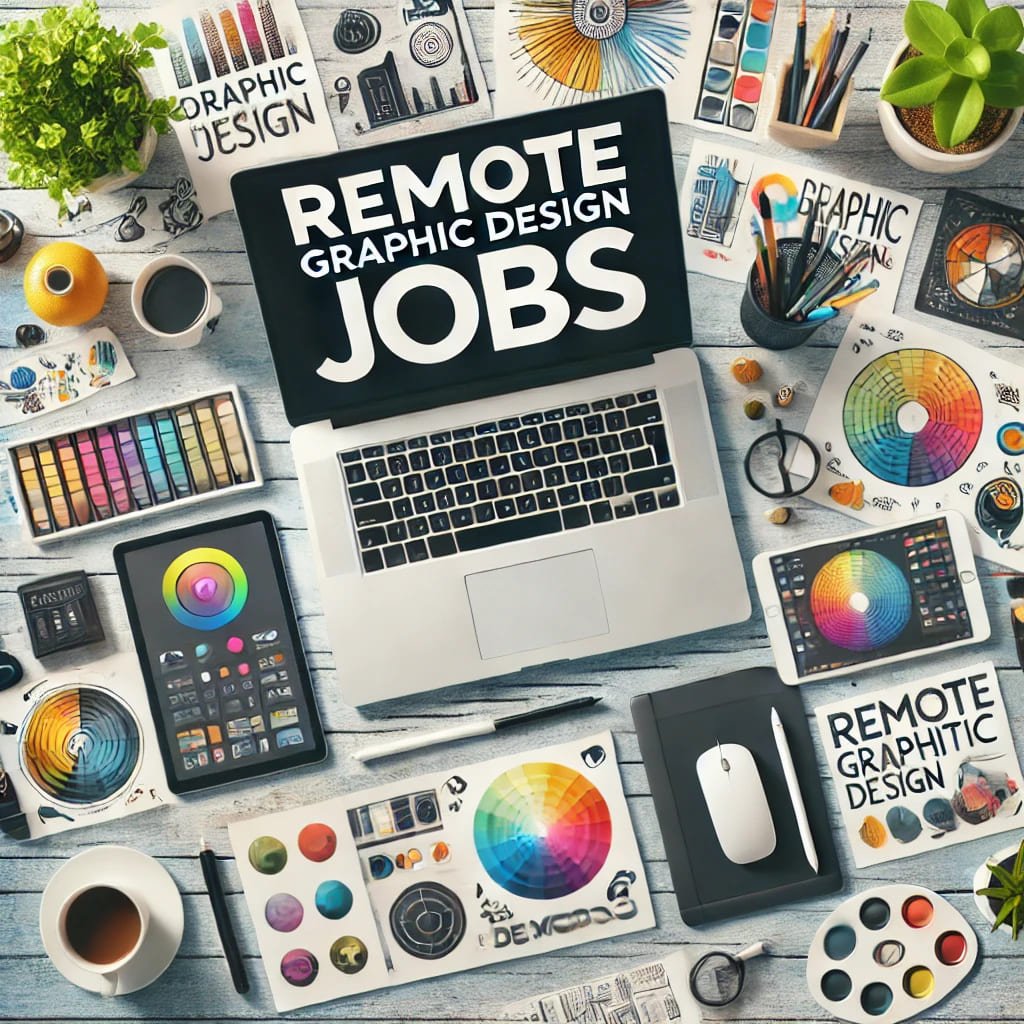
The world of work has undergone significant transformation, with the digital age opening up a variety of remote job opportunities across industries. One field that has adapted particularly well to this shift is graphic design. Remote graphic design jobs have become a staple in the creative economy, offering flexibility and independence while maintaining high demand for skilled professionals. This guide will explore the ins and outs of remote graphic design work, from the necessary skills to career paths and insider tips for finding high-paying remote roles.
If you are in this age range or older, your energy, metabolism, and overall well-being could be quietly declining. Don’t wait until symptoms appear.
Understanding the Remote Graphic Design Landscape
Graphic design is inherently visual, making it a natural fit for remote work. As designers can share, review, and edit files digitally, remote collaboration has become seamless and efficient, facilitated by tools like Adobe Creative Cloud, Figma, Canva, Slack, and Zoom. Remote graphic design jobs cater to a range of industries including advertising, e-commerce, entertainment, and corporate branding, allowing designers to work from anywhere in the world.
Why Remote Graphic Design Jobs are Popular
- Flexibility: Remote jobs allow designers to set their schedules and work from any location, balancing personal and professional lives.
- Global Opportunities: Remote positions give access to international clients and projects, exposing designers to diverse cultures, trends, and design preferences.
- Reduced Overhead Costs: Working from home eliminates commuting expenses and other costs associated with a traditional office setup.
Key Skills Needed for Remote Graphic Design Jobs
Graphic designers looking to work remotely need more than just technical design skills. They must be self-motivated, organized, and capable of collaborating effectively with remote teams. Here are some essential skills:
- Creativity and Artistic Skills: A strong creative foundation is key. Designers must have a well-developed aesthetic sense to create visually appealing designs.
- Technical Proficiency: Familiarity with software such as Adobe Photoshop, Illustrator, InDesign, Sketch, and Figma is often required, along with knowledge of HTML/CSS for web design.
- Time Management: Remote work demands excellent time management skills, as designers often juggle multiple projects.
- Communication: Effective communication is crucial in remote roles, as designers need to convey ideas clearly to clients and team members.
- Problem-Solving: Graphic designers must be adept at troubleshooting and coming up with creative solutions, especially when clients have specific demands.
Types of Remote Graphic Design Roles
There are various specializations within the field of graphic design, each with its own set of requirements and career paths. Here are some common types of remote graphic design roles:
- Web Designer: Focuses on creating visually appealing, functional websites. This role often requires knowledge of UX/UI principles and basic coding.
- Brand Designer: Develops logos, color schemes, and branding materials. Brand designers help businesses establish a visual identity.
- Illustrator: Creates custom illustrations for various applications, from editorial pieces to advertising.
- Product Designer: Works closely with engineering and marketing teams to design digital products, from app interfaces to interactive platforms.
- Motion Graphics Designer: Specializes in creating animated graphics for videos, websites, and advertisements.
- Social Media Designer: Focuses on creating engaging graphics for social media platforms, including posts, banners, and infographics.
- UI/UX Designer: Designs user interfaces and experiences for web and mobile apps, focusing on functionality and user engagement.
Finding Remote Graphic Design Jobs
Remote graphic design jobs can be found across various platforms and job boards, each catering to different types of clients and projects. Here are some popular platforms:
- Upwork: A freelance marketplace where designers can find short-term and long-term contracts with clients globally.
- Dribbble and Behance: Platforms where designers showcase their portfolios, attracting potential clients and employers.
- LinkedIn: Remote job postings are often available on LinkedIn, where designers can network and apply directly to companies.
- AngelList: Ideal for finding remote positions with startups and tech companies.
- Remote.co: A job board that specifically lists remote jobs across various industries, including design.
Tips for Succeeding in Remote Graphic Design Jobs
Success in a remote graphic design role requires discipline, adaptability, and the right tools. Here are some tips to help remote graphic designers thrive:
- Set Up a Productive Workspace: A comfortable, organized workspace minimizes distractions and increases productivity.
- Establish a Routine: Setting specific work hours helps maintain a balance between work and personal life.
- Stay Updated with Trends: The design field evolves rapidly. Regularly exploring design trends, attending webinars, and taking courses can keep skills sharp.
- Seek Client Feedback: Constructive feedback helps designers improve and ensures clients are satisfied.
- Network Actively: Building a professional network can lead to job opportunities and collaborations.
Benefits of Working in Remote Graphic Design Jobs
Remote graphic design jobs offer many advantages, especially for those who value independence and flexibility:
- Increased Productivity: Many remote designers report feeling more productive outside a traditional office, free from commuting and office interruptions.
- Work-Life Balance: Remote work can create a more balanced lifestyle, as designers have more control over their schedules.
- Diverse Portfolio: Remote jobs expose designers to a wide array of clients and industries, building a versatile portfolio.
- Opportunity for Growth: Freelance and remote roles often allow designers to experiment, learn, and grow quickly compared to traditional roles.
Challenges of Remote Graphic Design Jobs
While remote work offers flexibility, it also comes with challenges that designers need to be prepared for:
- Isolation: Working remotely can lead to feelings of isolation. Designers must make an effort to stay connected with colleagues.
- Communication Barriers: Without face-to-face interaction, misunderstandings can arise more easily. Clarity and consistency in communication are essential.
- Time Zone Differences: Working with global clients means dealing with different time zones, which can affect meeting schedules and deadlines.
- Finding Stable Work: Many remote graphic designers work as freelancers, which can mean periods of uncertainty when projects are scarce.
Future of Remote Graphic Design Jobs
The future of remote graphic design is bright, with companies increasingly adopting remote-first policies. Advances in technology, such as augmented reality (AR) and virtual reality (VR), open up new possibilities for graphic designers, allowing for more interactive and immersive designs.
Remote Graphic Design Jobs in the Context of AI: Artificial intelligence (AI) is shaping the future of graphic design, automating repetitive tasks and streamlining workflows. Designers who stay informed and adapt to new AI tools will be well-positioned for future success.
Discover More of Technology Splendor: Explore Our Other Sites
Health Fuels Everything
Energy, clarity, and balance are the foundation of every dream. Without health, wealth loses its shine and relationships lose their spark. Discover strategies to strengthen your body, sharpen your mind, and energize your spirit.
Discover Your Integral HealthRelationships Give Life Meaning
Health gives you energy. Wealth gives you freedom. But only deep, authentic relationships give life true purpose. Discover the tools to connect, love, and communicate at your best.
Improve Your Relationships
